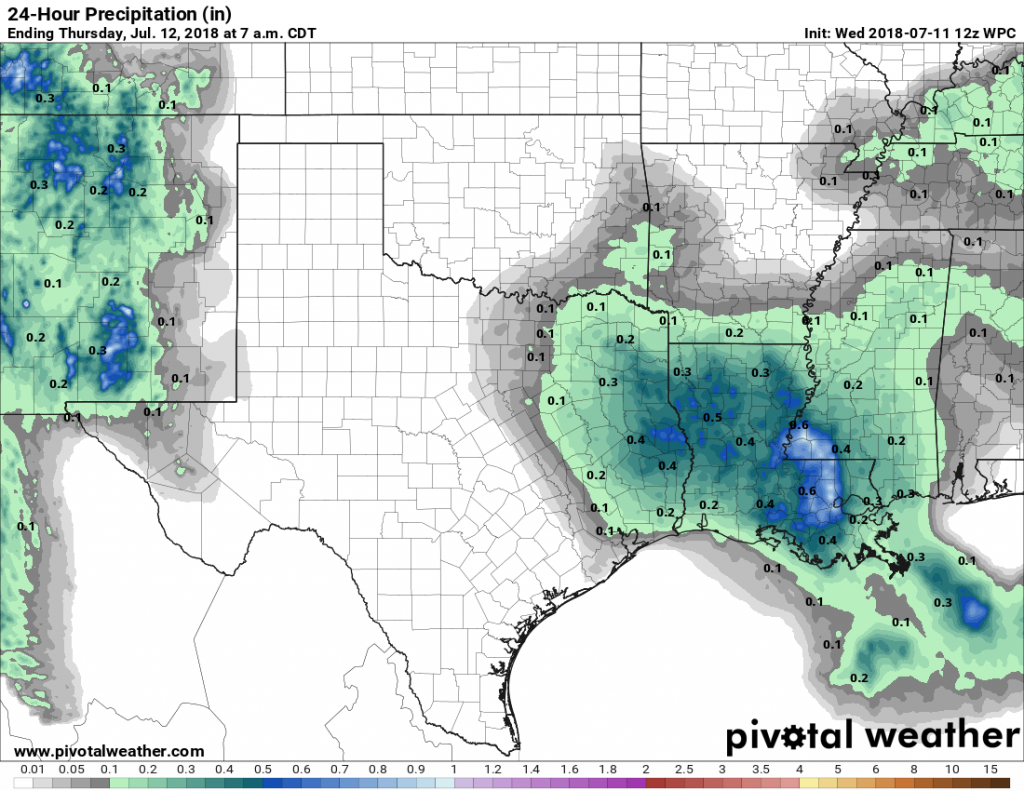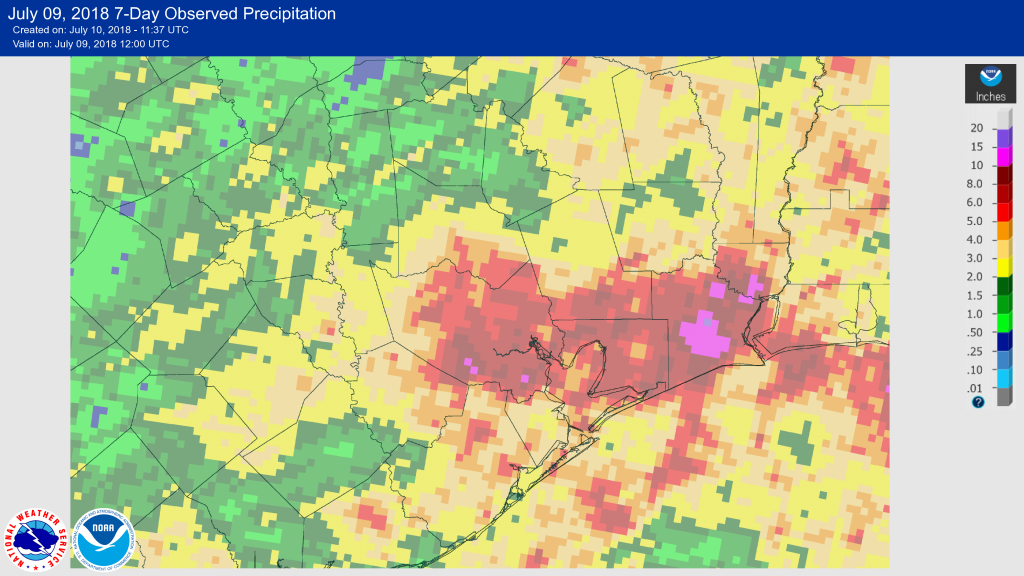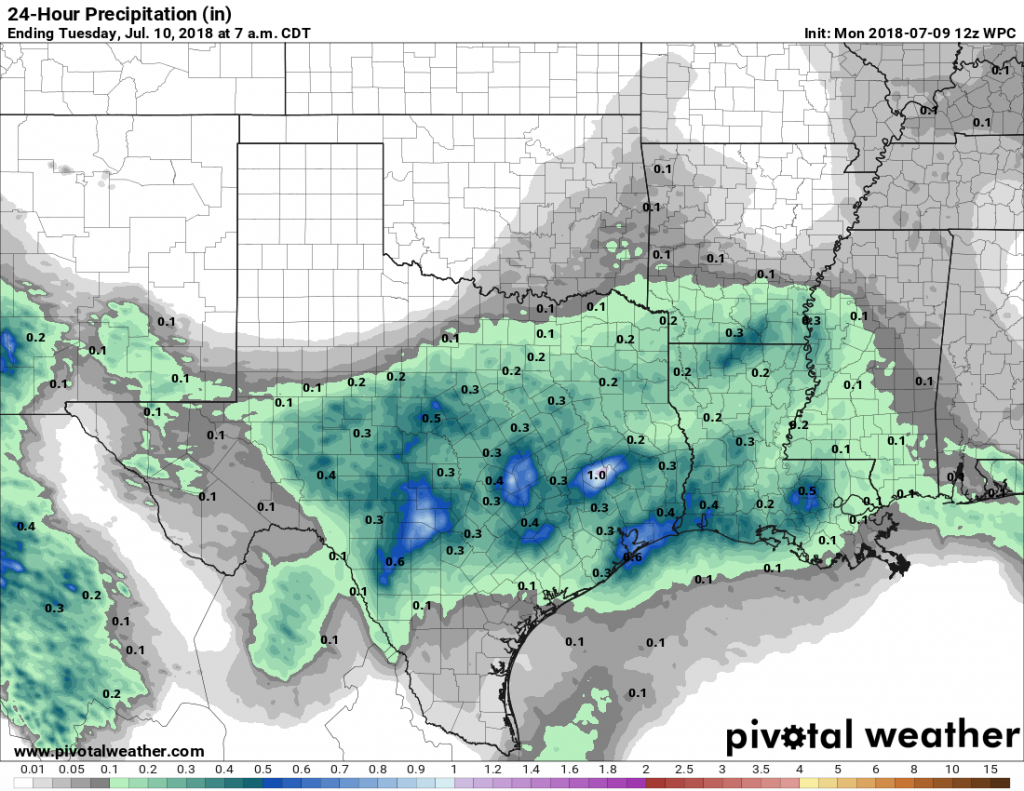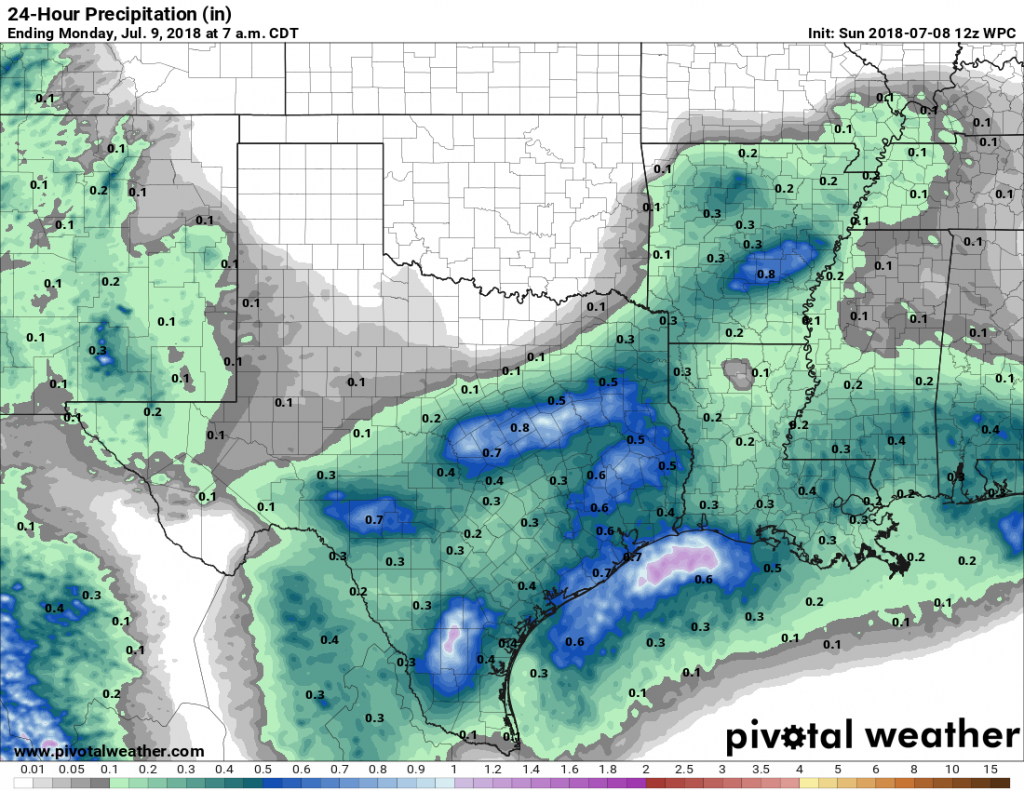Tuesday offered a preview for what we can expect the rest of the work week in Houston—some sunshine, some clouds, and some scattered showers and thunderstorms. Where the heaviest storms set up, downpours will occur, but we don’t expect to see the longer-lived showers that affected Houston last week around the July 4th holiday.
Wednesday
Partly sunny skies, with highs in the low 90s. Rain chances will be best on the eastern half of the city, where conditions are slightly more favorable for storms to develop. Still, there’s probably only about a 20 to 30 percent chance you get wet today.

Thursday and Friday
The story is similar to end the work week, with highs in the low 90s, a mix of sunshine and clouds, and scattered showers across the area. Again, there’s nothing we need to be too concerned about, but you probably should be prepared for the possibility of brief, heavy showers.




